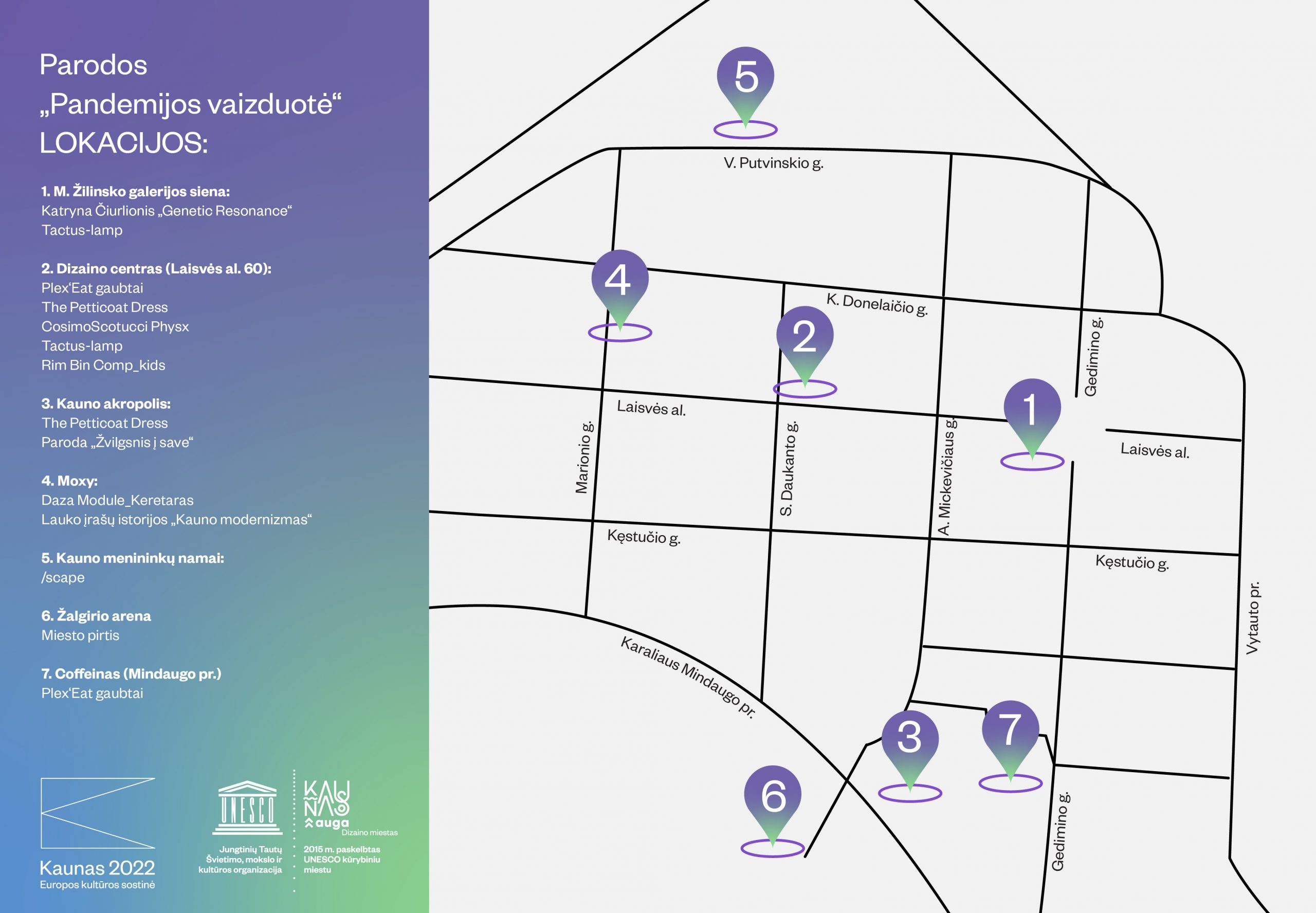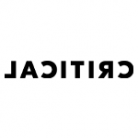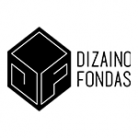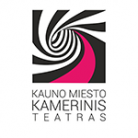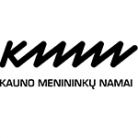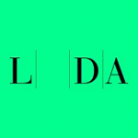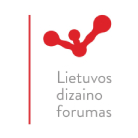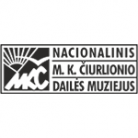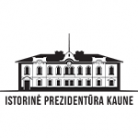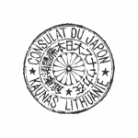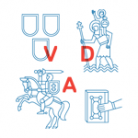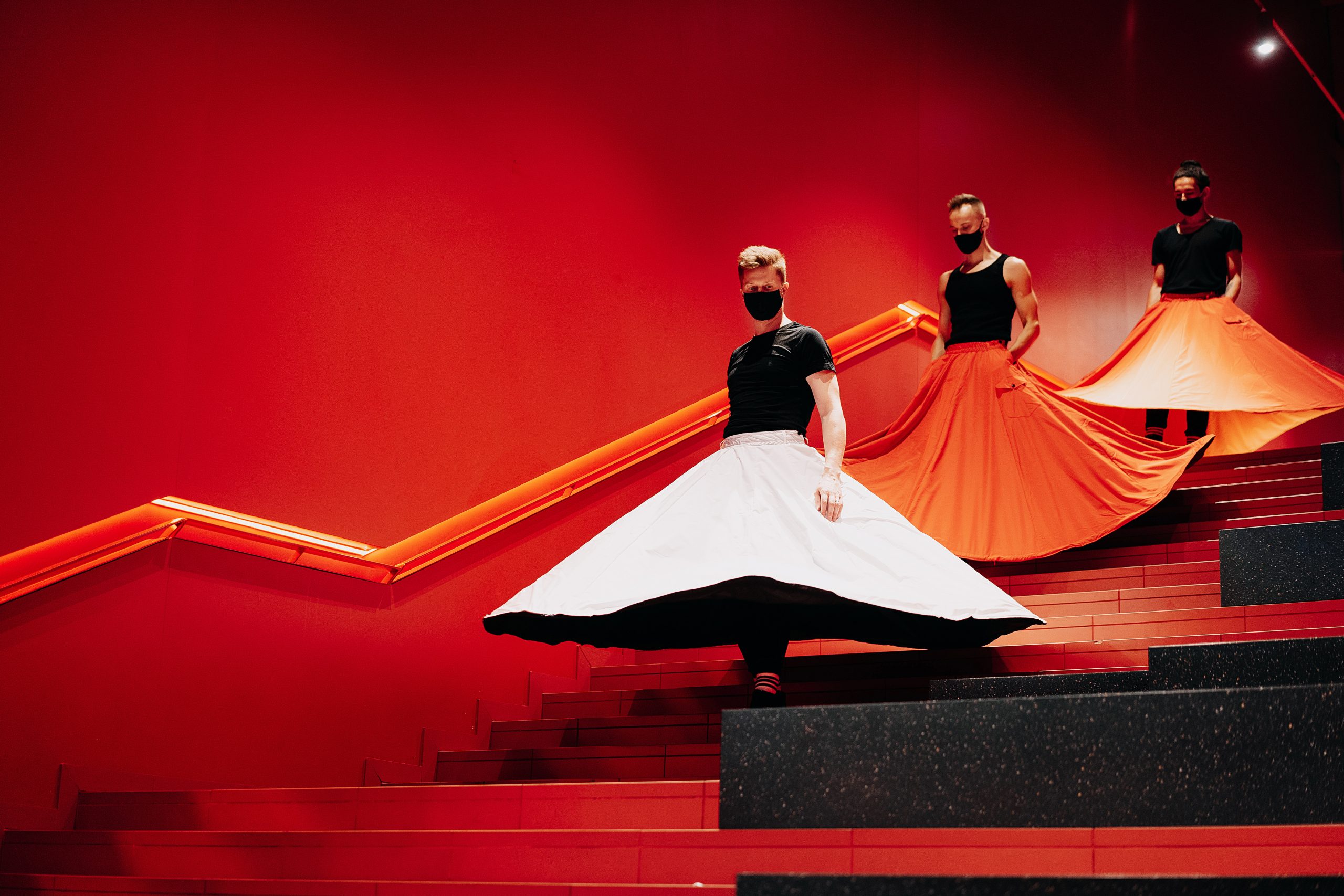
Tai dizaino artefaktų paroda Kauno viešosiose erdvėse, skirta atspindėti pandemijos laikotarpiu iššauktus sprendinius ir kūrybinės vaizduotės vaisius: tiek praktinius, (at)reaguojančius į nepaprastąją padėtį – kritinių situacijų dizaino sprendinius, tiek nepraktinius – kūrybiškus atsakus į karantino suvaržymus.
Kokias transformacijas kuria ir kokią ateitį šiandien projektuoja dizaino praktikai ir vizionieriai? Kaip jie padeda spręsti iškilusias problemas, prisitaikyti prie pakitusių sąlygų, užtikrinti saugumą ir ryšį tarp žmonių? Kokie nauji daiktinės ir erdvinės aplinkos sprendimai gimsta jų sumanymuose, projektuose, vizijose? Ar tai fantastika iš ateities ar ateitis dabartyje?
Pagrindinė idėja atskleisti pandemijos laiku sukurtus dizaino artefaktus ir kuriamą naują tikrovę – įkvepiančią ir inspiruojančią. Su ja susidursime pačiose netikėčiausiose ir tuo pat metu kasdieniškiausiose Kauno vietose: atvirose miesto erdvėse, kavinėse, muziejuose, gatvėse ir ten, kur prašysis atrandami unikalūs parodos artefaktai Kauną paštu pasiekę iš skirtingų pasaulio miestų.
Exposition “Co-Reality”
This is an exhibition of design artifacts in Kaunas public spaces, designed to reflect the solutions and outcomes of creative imagination evoked during the pandemic: both practical, (re)responsive to emergencies, namely, design solutions for critical situations, and impractical, i.e. creative responses to quarantine restrictions.
What transformations are being created and what future is being designed by practitioners and visionaries for today? How do they help to solve problems, adapt to changed conditions, ensure security and communication between people? What new solutions of the material and spatial environment are incorporated in their ideas, projects, visions? Is it fiction from the future or the future in the present?
In the title of the exhibition, we encode the main ideological hint about the inside CoVID and Co-created reality in the language of design – stimulating, inspiring, engaging. We will encounter it in the most unexpected and at the same time most everyday places in Kaunas: open city spaces, museums, and galleries, design boutiques, schools, streets, and anywhere unique exhibition artifacts can be discovered after reaching Kaunas by mail from different cities of the world.
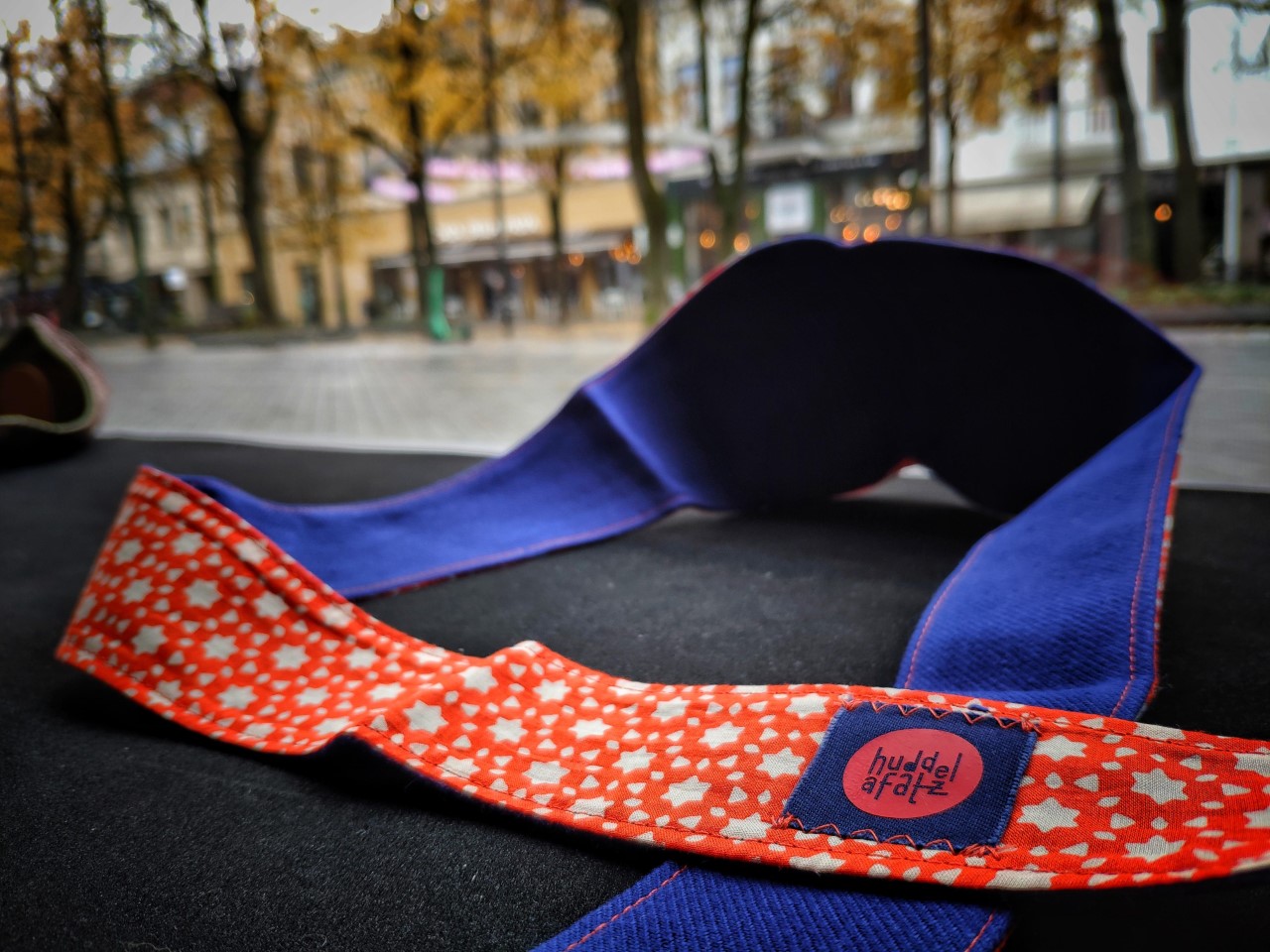
Project “Huddelafatz” and the “ Knyveli” facial masks
Design by: Caroline Koener & Michel Feinen, Luxembourg
The “Huddelafatz” project is born out of a desire to revive and remix the traditional blue collar workwear. Our work process and subject development, also intends to thematize a long lost local textile industry, while trying to find local craftsmanship, raw materials from close by origins. The “Knyveli” facial masks were created as a reaction to the sudden COVID situation. Hand made from a heavy blue cotton material, recovered from a French textile mill from the 1960s and many other recovered or recycled fabrics.
„Huddelafatz“ ir „Knyveli“ veido kaukės
Autoriai: Caroline Koener ir Michel Feinen, Liuksemburgas
„Huddelafatz“ projektas gimė siekiant atgaivinti ir iš naujo pritaikyti tradicinius darbininkų (angl. blue collar) darbo drabužius. Darbo procese ketinama atgaivinti seniai prarastą vietinę tekstilės pramonę, rasti vietos meistrų bei žaliavų iš netoliese gaminamų ar auginamų medžiagų. Veido kaukės „Knyveli“ buvo sukurtos kaip reakcija į staigią COVID situaciją. Kaukės pagamintos rankomis, iš sunkios mėlynos medvilninės medžiagos, atkurtos pagal 6-ajame dešimtmetyje Prancūzijos tekstilės fabrike austą audinį bei kitas atkurtas arba perdirbtas medžiagas.

APSAUGINIS SIJONAS
Autorius: „Multiply Office“, Šveicarija
Apsauginis sijonas yra puiki aprangos detalė norint nenustoti užsiimti aktyvia ir saugia socialine veikla smagiai, stilingai ir patogiai COVID-19 pandemijos metu. Sijonas buvo sukurtas siekiant išspręsti socialinio atstumo klausimą. Sijonas veikia kaip komunikacijos priemonė, kuri primena žmonėms išlaikyti socialinį atstumą be įtampos ir kūrybiškai. Kartu sukurta automatinė sąveika tarp skirtingų sijonų nešiotojų. Jūsų judesiai skatina pajudėti ir kitus.
THE PETITCOAT DRESS
Design by: Multiply Office, Switzerland
The Petticoat dress is the perfect outfit to maintain strong and safe social activities with fun, style and comfort during the Covid-19 pandemic. The dress has been designed to answer the question of social distancing. The Petticoat dress works as a preventative tool and allows to bring back a feeling of comfort. The dress is seen as a communication tool that reminds people of respecting social distance but in a relax and creative way. An automatic interaction is created between the different wearers of the dress. One’s move invites the move of others.


STRUKTŪRINĖ SKRYBĖLĖ
Autorius: Veronica Toppino, Italija
Šios skrybėlės autorė buvo įkvėptas didelių matmenų skrybėlių, nešiotų XVIII amžiuje, ir iš plieninių lankų gamintų krinolinų. Būtent šiais koranaviruso laikais, kai socialinis atstumas tapo skambia fraze, autorė pažvelgė į praeities socialinio atstumo laikymosi mados dizaino pavyzdžius. Skrybėlės dėl plataus krašto gali priminti aplink galvą skriejančią orbitą.
STRUCTURE HAT
Design by: Veronica Toppino, Italy
Structure hats is a design project for which the author was inspired by oversized hats from the 18th century and steel cage crinolines. In this particular time of coronavirus, where ‘social distancing’ has become a buzzword, she looked into historic examples of social distancing in fashion design. Structure hats could suggest the creation of an orbit around the head, because of the wide brim.
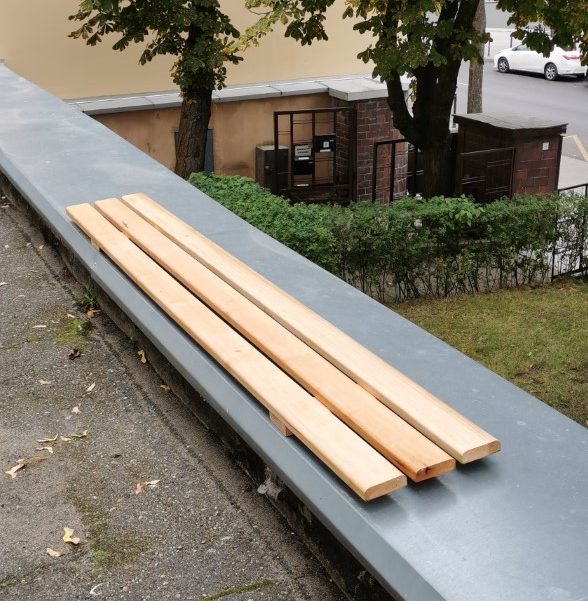
/scape: dokumentuojamas laikas
Autoriai: Augustė Vickunaitė, Niki Matita, entropija, La cuarta conquista de México
Muzikos albumas /scape gimė pandeminio periodo pradžioje. Garso kūrėjai buvo pakviesti bendram projektui, kad, iš vienos pusės tarsi dokumentų keistoką – izoliacijos ir atskirties – laiką, iš kitos – kad nenutrauktų kūrybinis procesas. /scape, sumanytas kaip solidarumo projektas, tapo keturių kūrinių sutelktine. Kiekvienas jų kviečia įsitraukti į garsus, reflektuojančius izoliacijos, sulėtėjusio laiko, atskirties ir praradimo patirtis.
/scape: a document of time |
Authors: Augustė Vickunaitė, Niki Matita, entropija, La cuarta conquista de México
/scape is a document of time: conceived as a project of solidarity, it is finalised as a collection of four pieces, each of them proposing a possibility to immerse into a set of sounds reflecting four experiences of isolation, suspended time, distancing and loss.

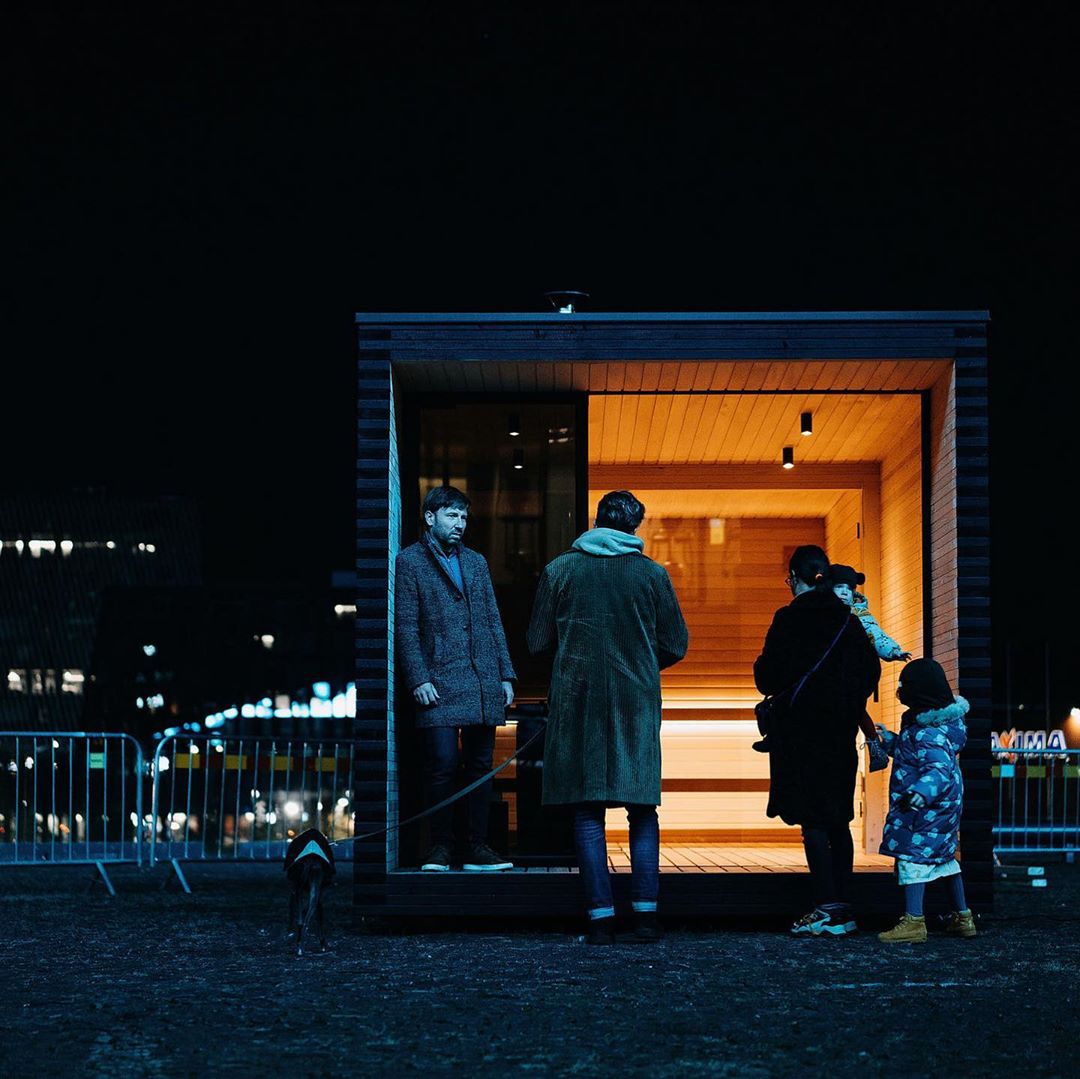
MIESTO PIRTIS
Autoriai: Jurgis Garmus, Aleksandras Lukėnas
Neramusis duo: užkietėjusęs estetas Jurgis Garmus ir inžinierius Aleksandras Lukėnas karantino metu nusprendė kažką daryti. Taip gimė ši netradicinė miesto pirtis – mobilus, kilnojamas, medžio masyvo statinys. Rąstinio namą primenančios pirties konstruktyvui naudota CE24 sertifikuota mediena. Interjere vietoje gultų netipiškas laiptų at bėgelių sprendimas ir „kregždės
uodegą“ – tradicinį rastų suleidimą atskleidžiantis reginys. Vienu metu pirtyje komfortabiliai kaitintis gali aštuoti žmonės.
CITY SAUNA
Design by: Jurgis Garmus, Aleksandras Lukėnas
The restless duo: the incorrigible esthete Jurgis Garmus and the engineer Aleksandras Lukėnas decided to do something during the quarantine. This is how this non-traditional city sauna was born – a mobile, movable, solid wood building. CE24 certified wood was used for the construction of the log house-like sauna. In the interior, instead of sunbeds, an atypical solution of stair rails and a “swallow tail” is a spectacle revealing a traditional found injection. Eight people can sunbathe comfortably in the sauna at the same time.
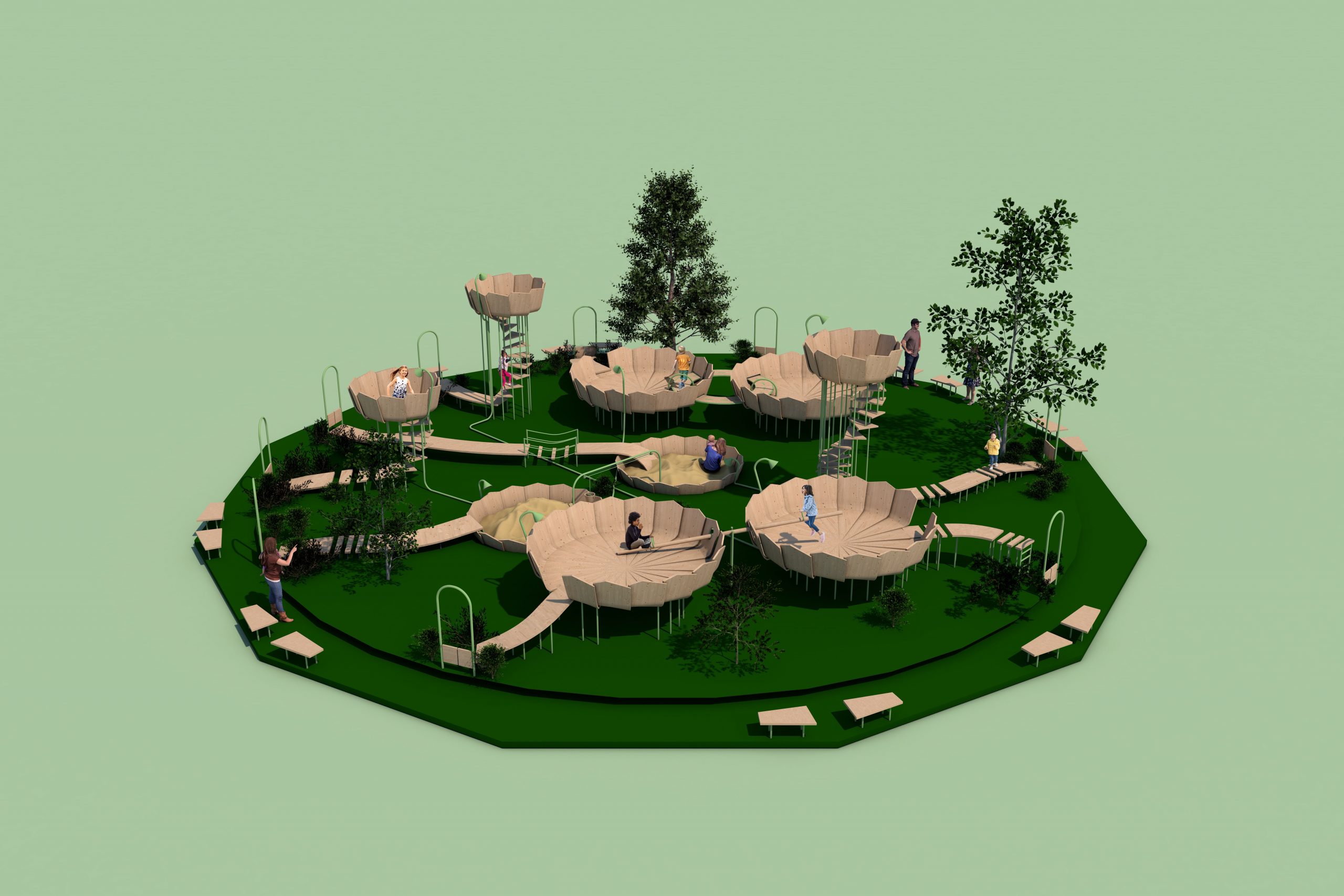
“RIMBIN” VAIKŲ ŽAIDIMO AIKŠTELĖ
Autoriai: Martin Binder ir Claudio Rimmele
„Rimbin“ yra saugi vaikų žaidimų aikštelė, kurioje vaikai gali žaisti, kalbėtis ir juoktis kartu nerizikuodami išplatinti „Covid-19“ viruso ir tuo pat metu neprarasti žaidimo džiaugsmo. Šios naujos koncepcijos autoriai yra Berlyno išradėjai Martin Binder ir Claudio Rimmele, kurie šią krizę priėmė kaip kūrybinį iššūkį.
„Rimbin“ tikslas yra sukurti konceptualų žaidimų pasaulį, kuris leistų vaikams ir toliau mėgautis
jaudinančiais ir įkvepiančiais susitikimais – net ir po pandemijos. Vaikų poreikiai yra svarbiausi. Ši koncepcija taip pat skatina ilgalaikį miesto žaidimų aikštelių permąstymą – vaikai gali žaisti atvirose erdvėse net ir tokiose situacijose, kaip Covid-19 pandemija. Rimbin žaidimų aikštelės atskiri elementai taip pat gali būti naudojami viešosiose erdvėse kaip individualaus žaidimo vietos.
“RIMBIN” CHILDREN PLAYGROUND
Design: Martin Binder ir Claudio Rimmele
Rimbin is an infection-free playground where children can play, talk and laugh together without risking spread of Covid-19, and without loosing the fun of playing. Responsible for this new concept are Berlin inventors Martin Binder and Claudio Rimmele, who saw the crisis as a creative challenge. The aim of Rimbin is to develop a conceptual playworld that enables children to continue to enjoy exciting and inspiring encounters – even after the pandemic. The needs of children are at the centre of attention. The concept also encourages long-term rethinking of playgrounds in urban cities so that they can remain open in a situation comparable to the Covid-19 pandemic. If Rimbin as a holistic concept becomes a reality, individual elements can also be used in public spaces as individual play stations, thus expanding the concept in a modular way.

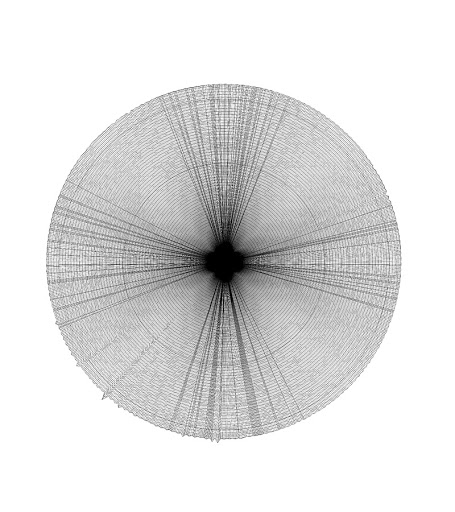
GENETINIS REZONANSAS
Autorius: Katryna Čiurlionis
„Mūsų genetika nuolat keičiasi, reaguoja į mūsų aplinkos poveikį, kad išlaikytų pusiausvyrą. Naudodamasi parametrinio projektavimo principais, sukūriau naują sistemą, pagal kurią būtų galima vizualizuoti genų ekspresijos duomenis. Šie duomenys užfiksuoja nuolatinės pokyčių sistemos momentinį vaizdą. Animacijoje matomas subtilus svyravimas parodo, kaip genetinė informacija trumpam pasikeičia ir kinta, reaguodama į konkretaus vaisto buvimą per 24 val. Pradiniame tyrime naudojamas vaistas – gliukokortikoidų steroidas (deksametazonas), kuris dabar naudojamas kaip eksperimentinis COVID-19 gydymas.
GENETIC RESONANCE
Author: Katryna Čiurlionis
Our genetics are constantly shifting, responding to the effects of our environment in order to maintain equilibrium. Using the principles of parametric design, I established a new framework by which to visualize gene expression data. This data captures a snapshot of a system in a constant state of change. The subtle oscillation demonstrated in the animation shows how genetic information briefly changes and shifts in response to the presence of a specific drug over a 24-hour period. The drug type used in the original study was the glucocorticoid steroid (Dexamethasone) which is now being used as an experimental treatment for COVID-19.
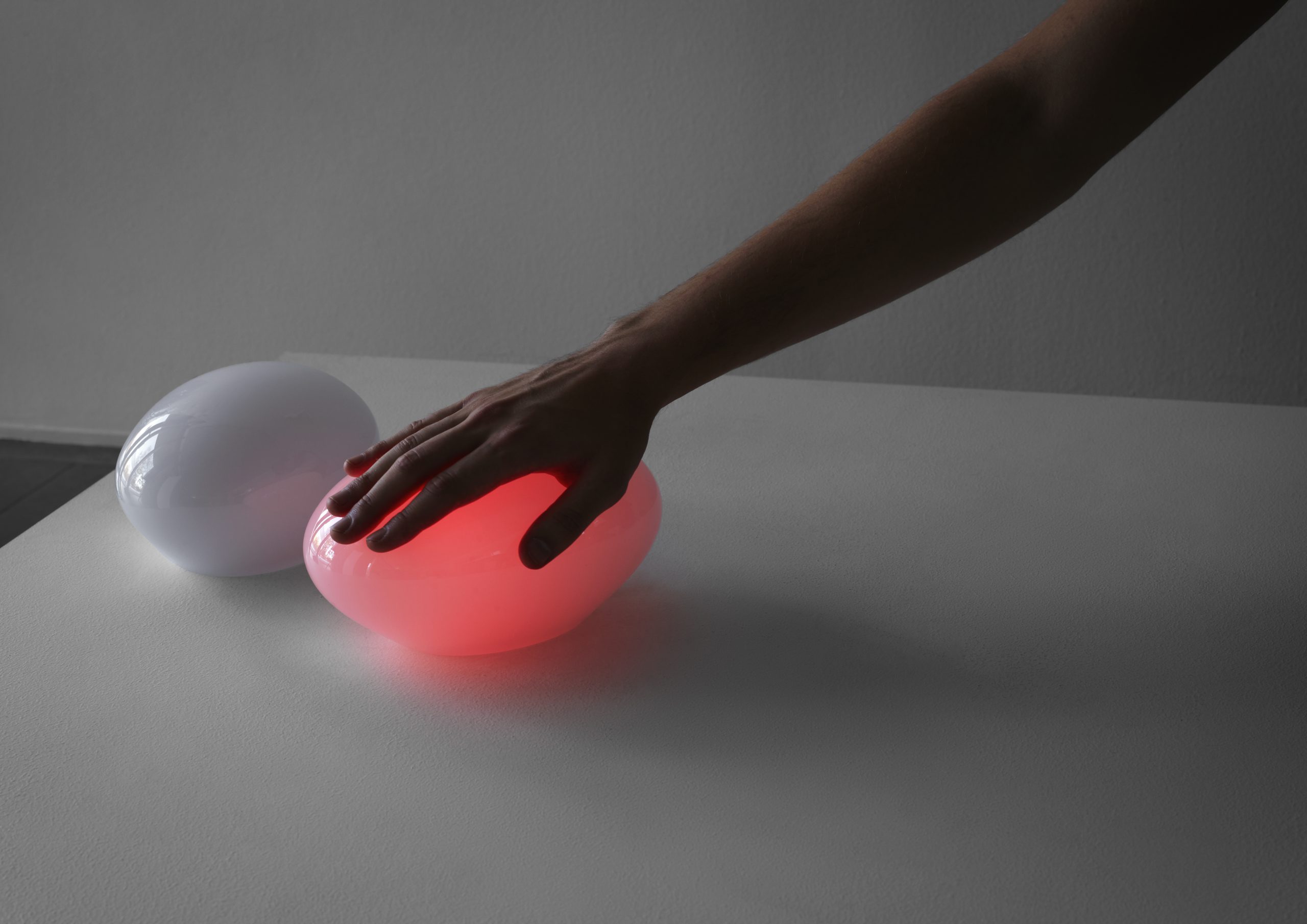
PRISILIETIMŲ LEMPOS
Autorius: Alexander Lervik, Švedija
Prisilietimų lempos yra unikalus būdas bendrauti su draugais ir šeima. Tai tarsi telefoninis skambutis, bet ne skambutis – norėdami parodyti kitam, kad apie jį galvojate, tereikia paliesti lempą ir jūsų draugo ar šeimos nario lempa pradės švytėti raudonai. O po kurio laiko vis liečiama sušyla iki kūno temperatūros. Jei kitas asmuo pastebęs įsijungusią lempą pradeda ją taip pat liesti, abi lempos pradeda pulsuoti tarsi širdis.
TACTUS LAMPS
Design by: Alexander Lervik, Sweden
“Tactus Lamps” is a unique way to communicate with friends and family. It’s between a phone call and nothing – you want to show someone that you are thinking of them you just caress the lamp and their lamp starts glowing red. When you caress the lamp in your home the other lamp reacts and starts glowing red and get in to body temperature after a while if you caress. If the other person sees that the lamp is on and caresses back, then both the lamps start pulsing like a heart.

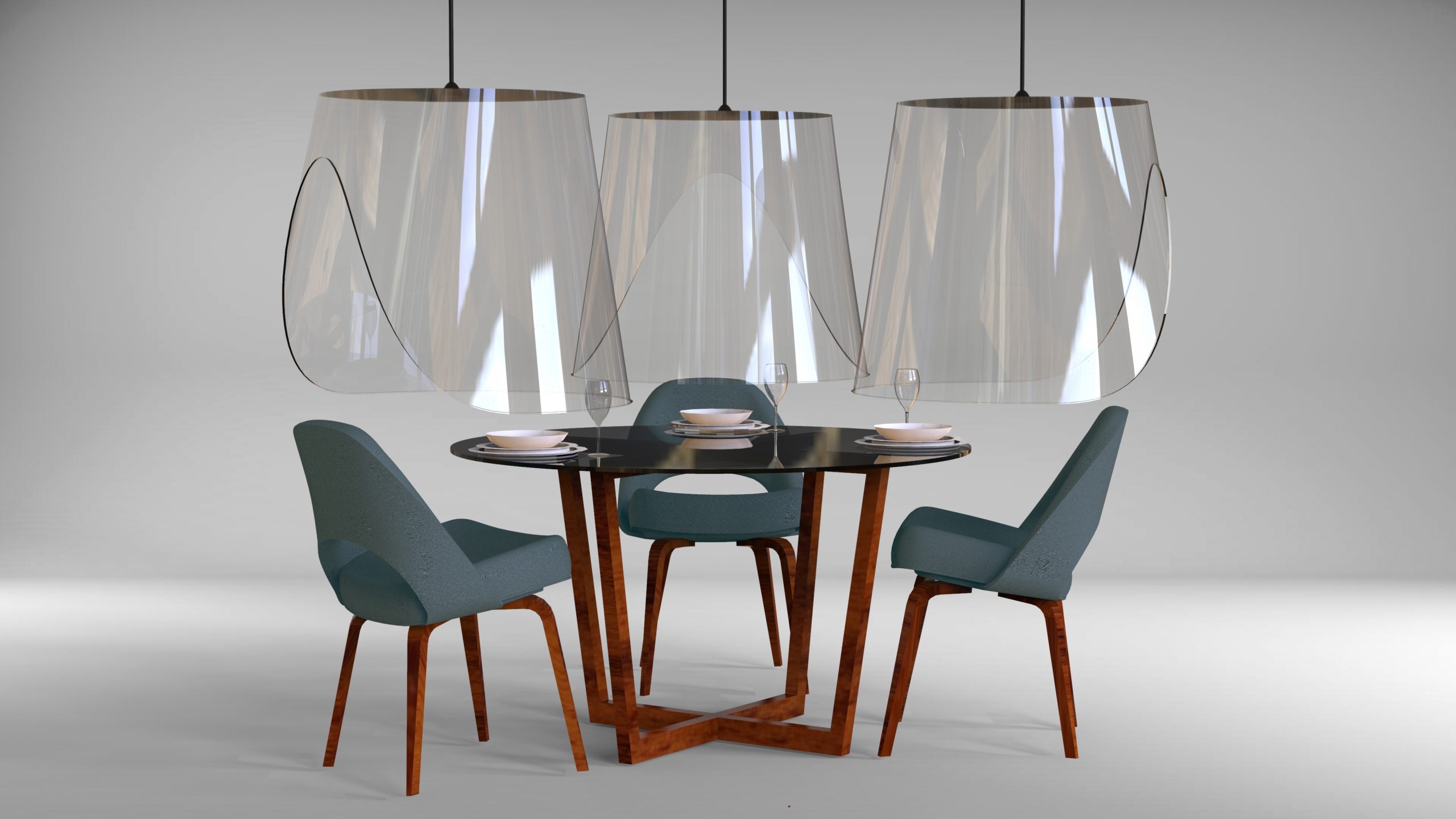
Plex’Eat
Autorius: CHRISTOPHE GERNIGON STUDIO, Prancūzija
Prancūzų kūrėjas Christophe GERNIGON jau daugelį metų gilinasi į kasdienius daiktus. Avangardinės sielos kūrėjas įsivaizdavo žaismingą, iki šiol nematytą būdą priimti barų ir restoranų klientus išlaikant visišką saugumą šiuo visuotinių apribojimų laikotarpiu. Šis sprendimas atrodo estetiškai ir elegantiškai ir yra tinkamai suprojektuotas siekiant išlaikyti tarp klientų fizinį atstumą ir taip užtikrinti visišką apsaugą kovojant su COVID-19 pandemija.
Plex’Eat
Design by: CHRISTOPHE GERNIGON STUDIO, France
French designer Christophe GERNIGON has been conceiving everyday objects for many years. With his avant-garde approach, he imagined a playful, never-seen-before way to welcome bar and restaurant clients in total security during the confinement period. This turnkey solution is aesthetic, well-designed and elegant while clearly respecting a physical separation between clients to insure complete protection to fight the COVID-19 pandemic.
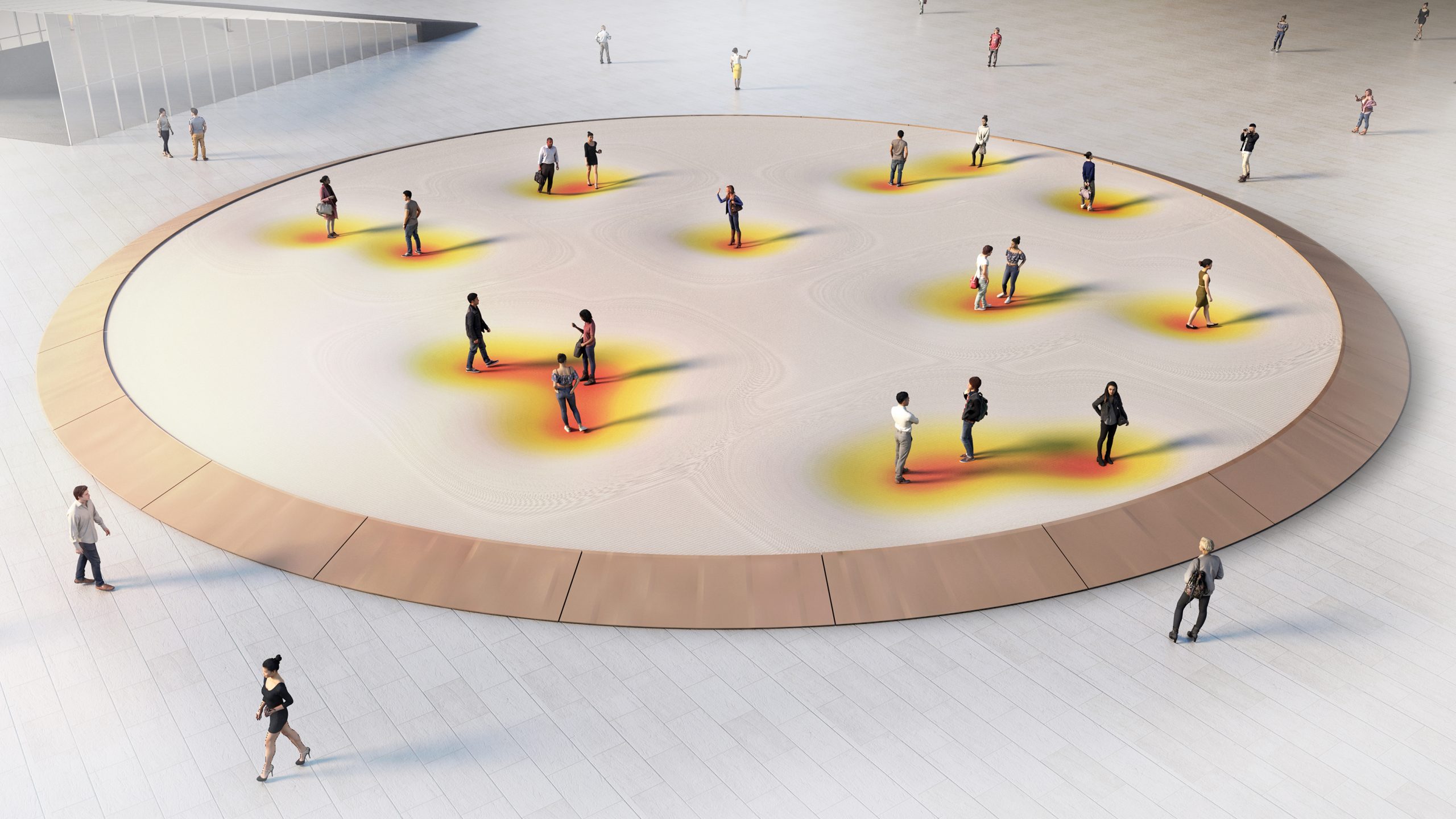
PHYSX
Autorius: Cosimo Scotucci, Italija
Covid-19 virusui plintant, visame pasaulyje imamasi griežtesnių socialinio atsiribojimo priemonių. Iki šiol visi siūlomi modeliai buvo pagrįsti statiniais sprendimais, ratais ant žolės, juostomis restorane. Taip žmones apribojant tam tikroje erdvėje, tačiau kasdienybės realybė yra kitokia.
Physx instaliacija susideda iš sandaraus paviršiaus, pagaminto iš elastingo pluošto, pakelto nuo žemės apie 50 cm. Kai žmogus žengia ant membranos, ši sugeria slėgį ir įdumba. Membrana atspindi skirtingų spalvų vidinius pluoštus. Automatiškai aplink asmenį susidaro skirtingo intensyvumo spalvota 1,5 m „saugi zona“, apibrėžianti atstumą, kurį reikia išlaikyti bendraujant su kitais žmonėmis. Kai žmonės priartėja vienas prie kito, asmeninės zonos ima maišytis, parodydamos, kad saugaus atstumo priemonių nėra paisoma. Skirtingos pluoštų spalvos leidžia suprasti, kokio laipsnio pavojus susidaro, žmonėms stovint vienam šalia kito.
PHYSX
Author: Cosimo Scotucci, Italy
Since the Covid virus start to rise all around the world, more strict social distancing measures should be taken. Till now all the proposed models are based on a static solution, circles on the grass, tape in the restaurant, generally people are confined in a given space but we know, daily reality is much different. Physx installation consists in a tight tend surface, made out of an elastic fiber, raised from the ground of about 50cm. Once a person step on the membrane, this one absorbs the pressure, bending in a depression-like valley. The membrane stretches and reveals the inner fibers that are in different colors. Automatically a colored “safe zone” of 1,5m with different intensity is generated around the person, defining the distance that should be kept while interacting with the other people. When people get close to each other, the personal areas start to blend together showing that the measures are not respected. Thanks to the different colors of the fibers it is also easy to understand what’s the grade of danger people face standing next to each other.

